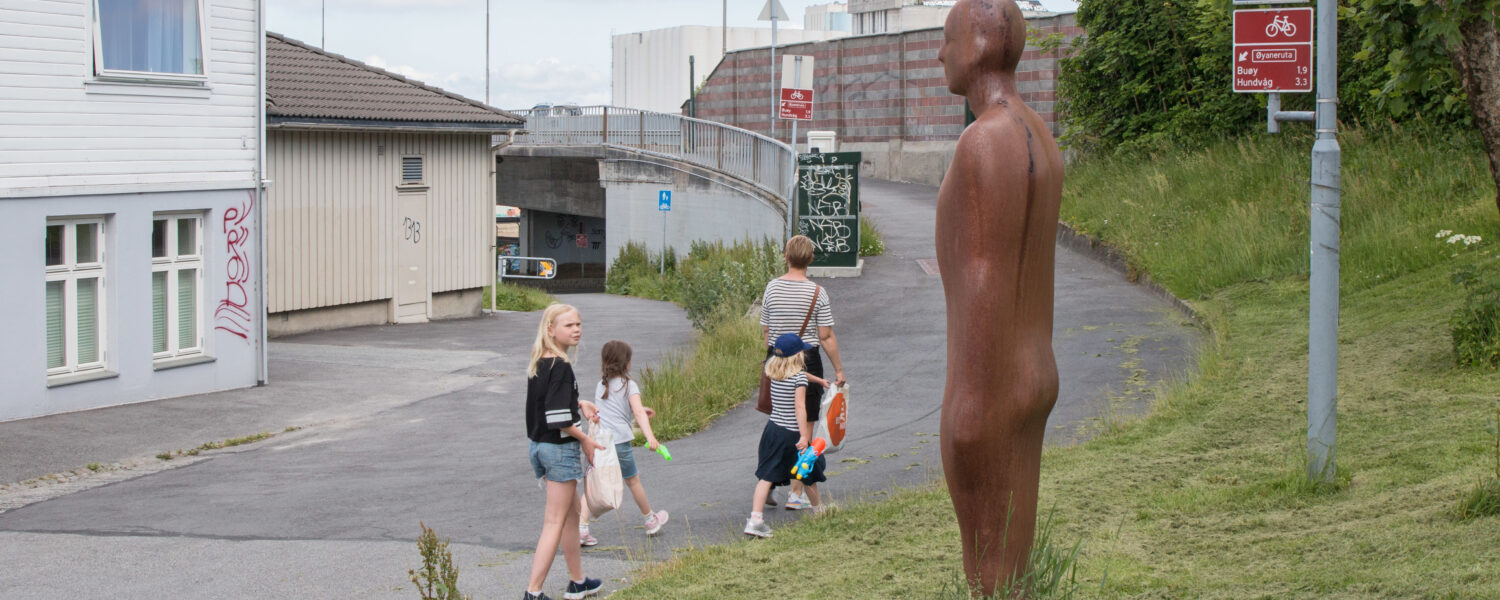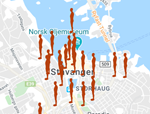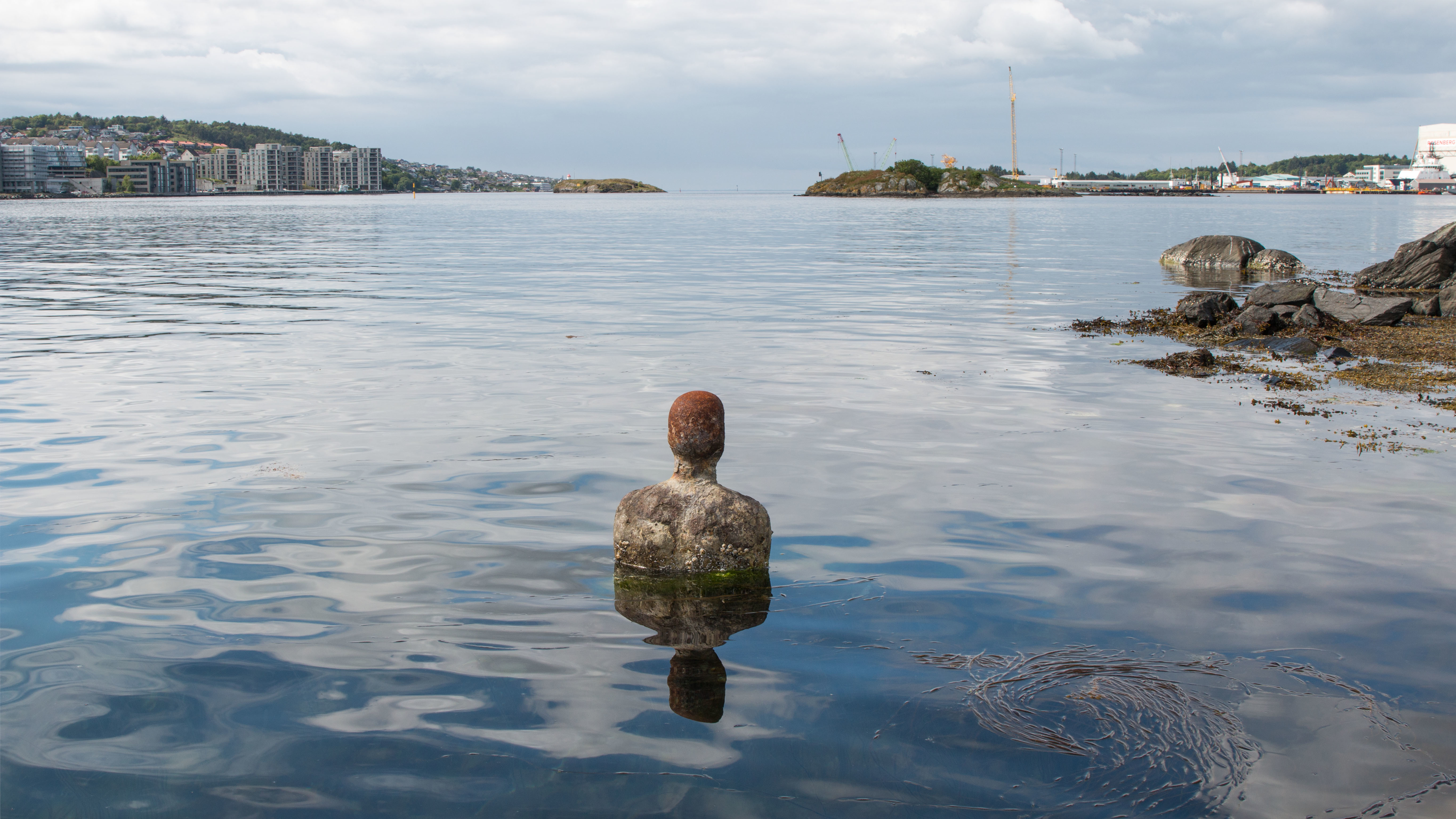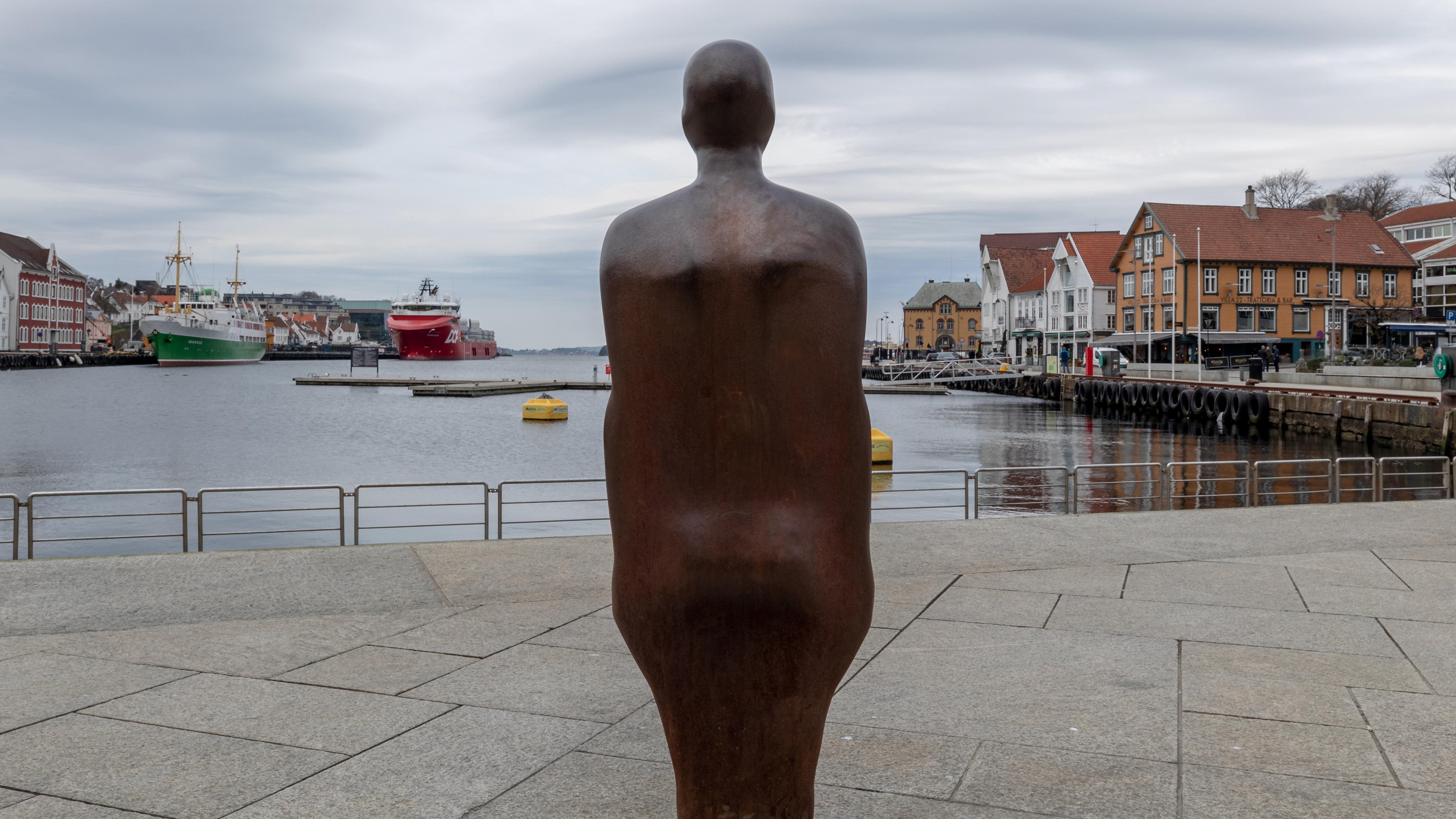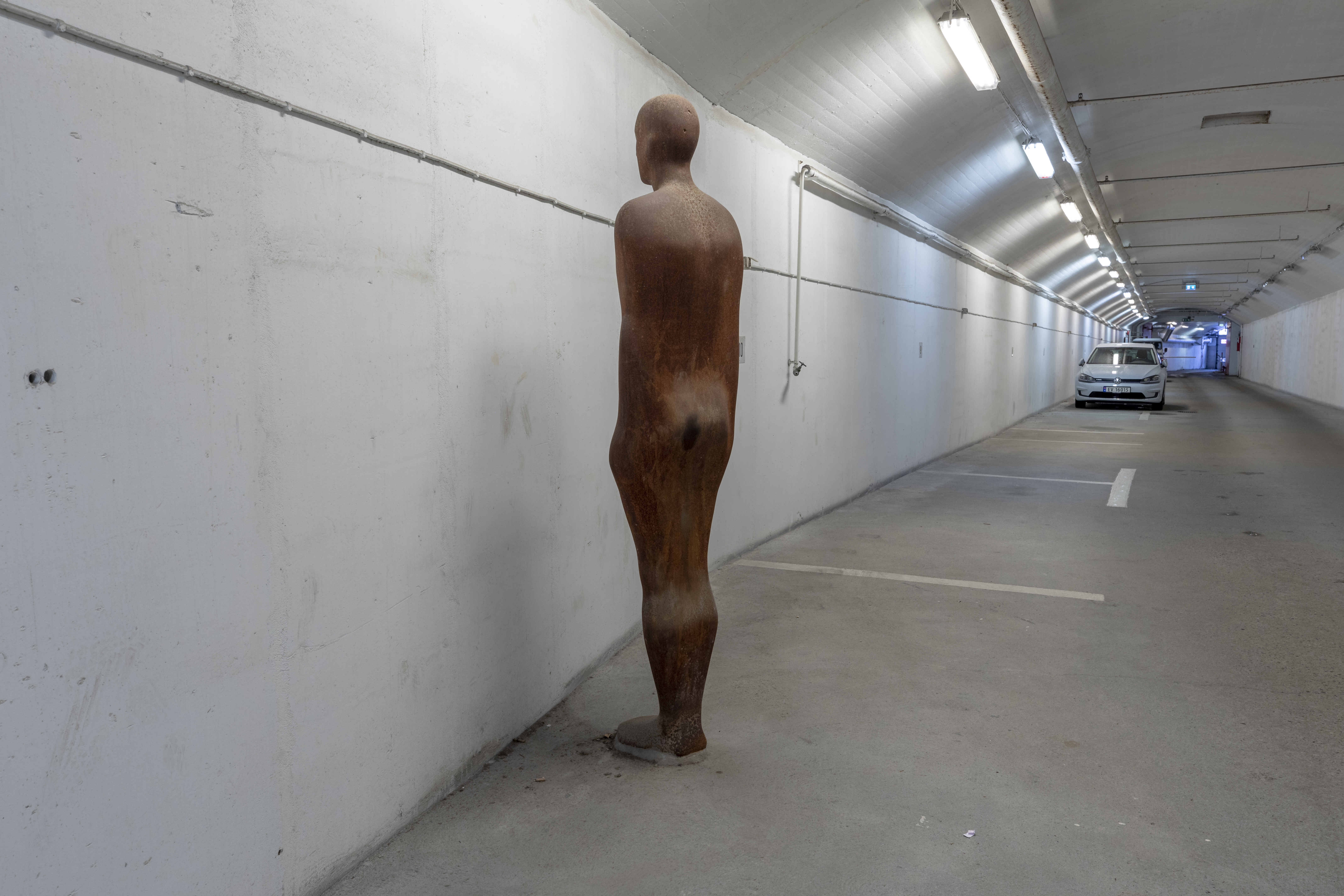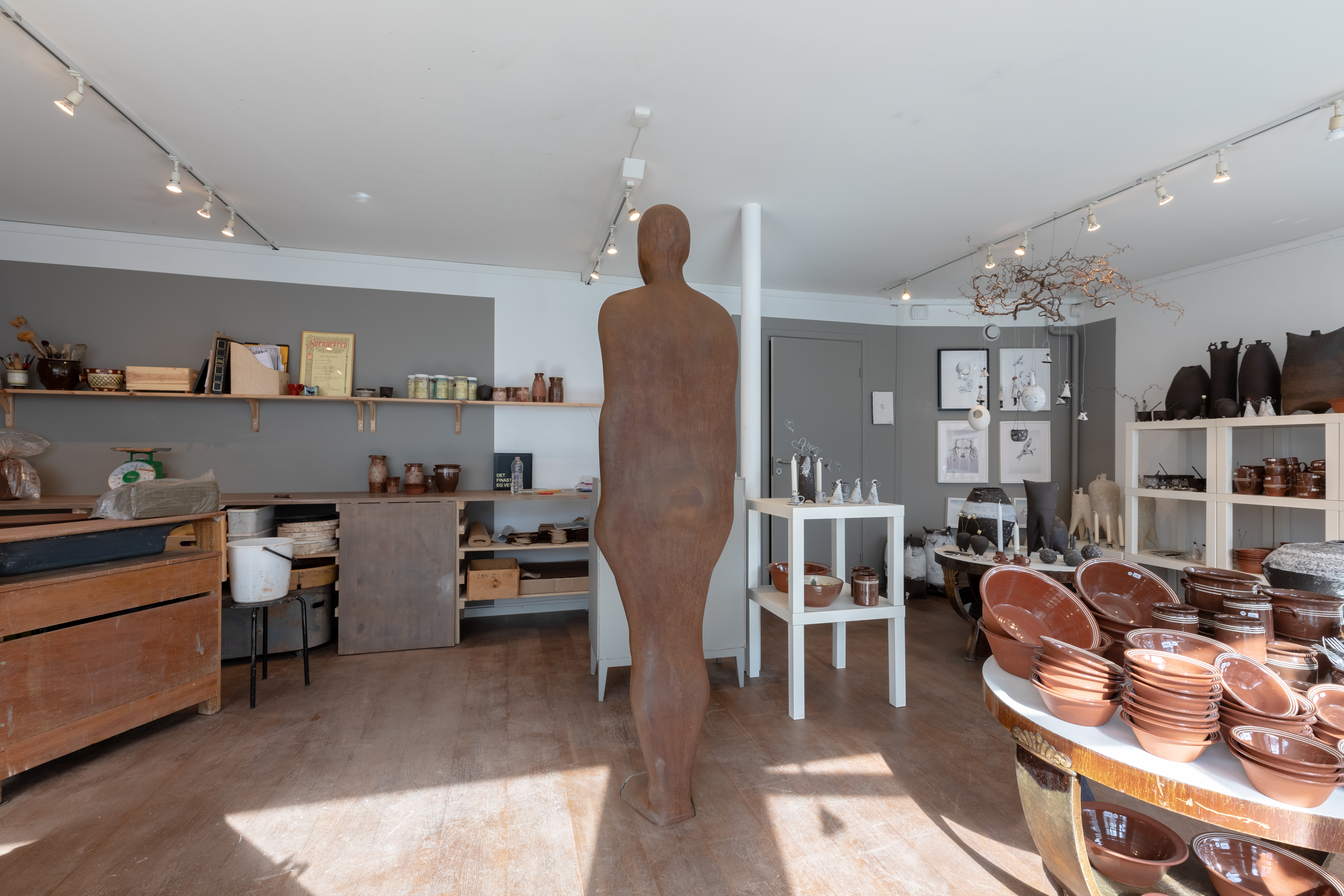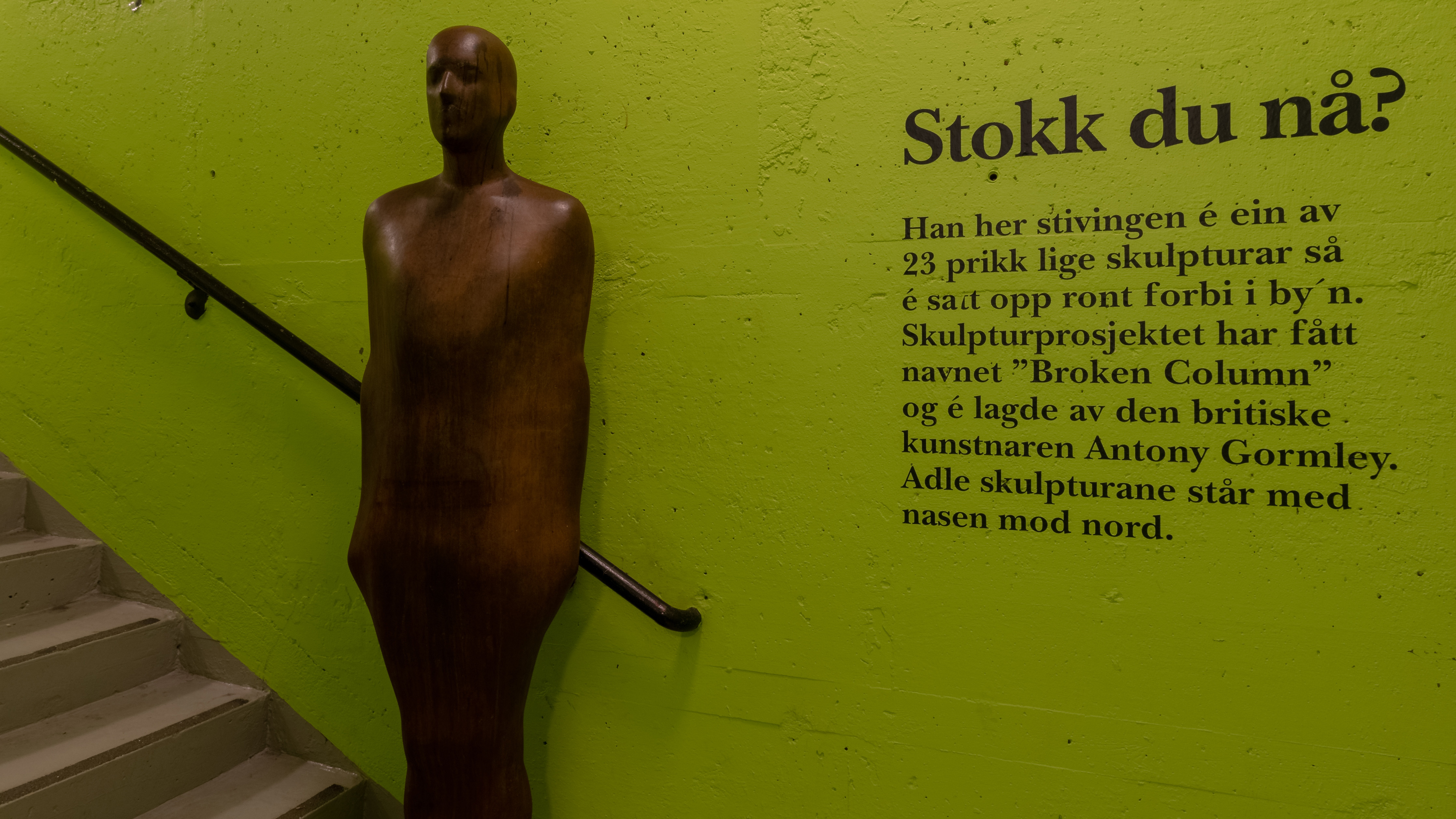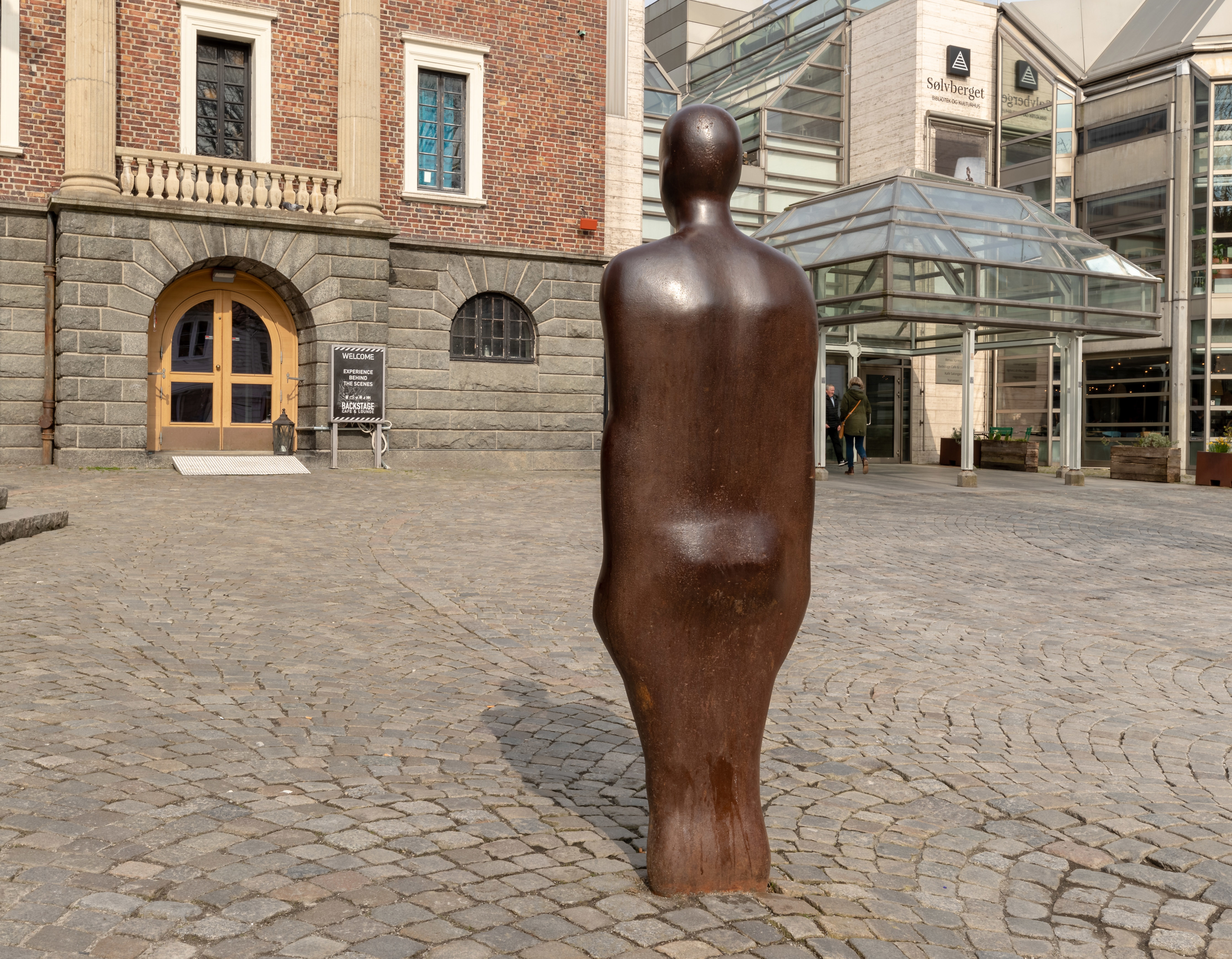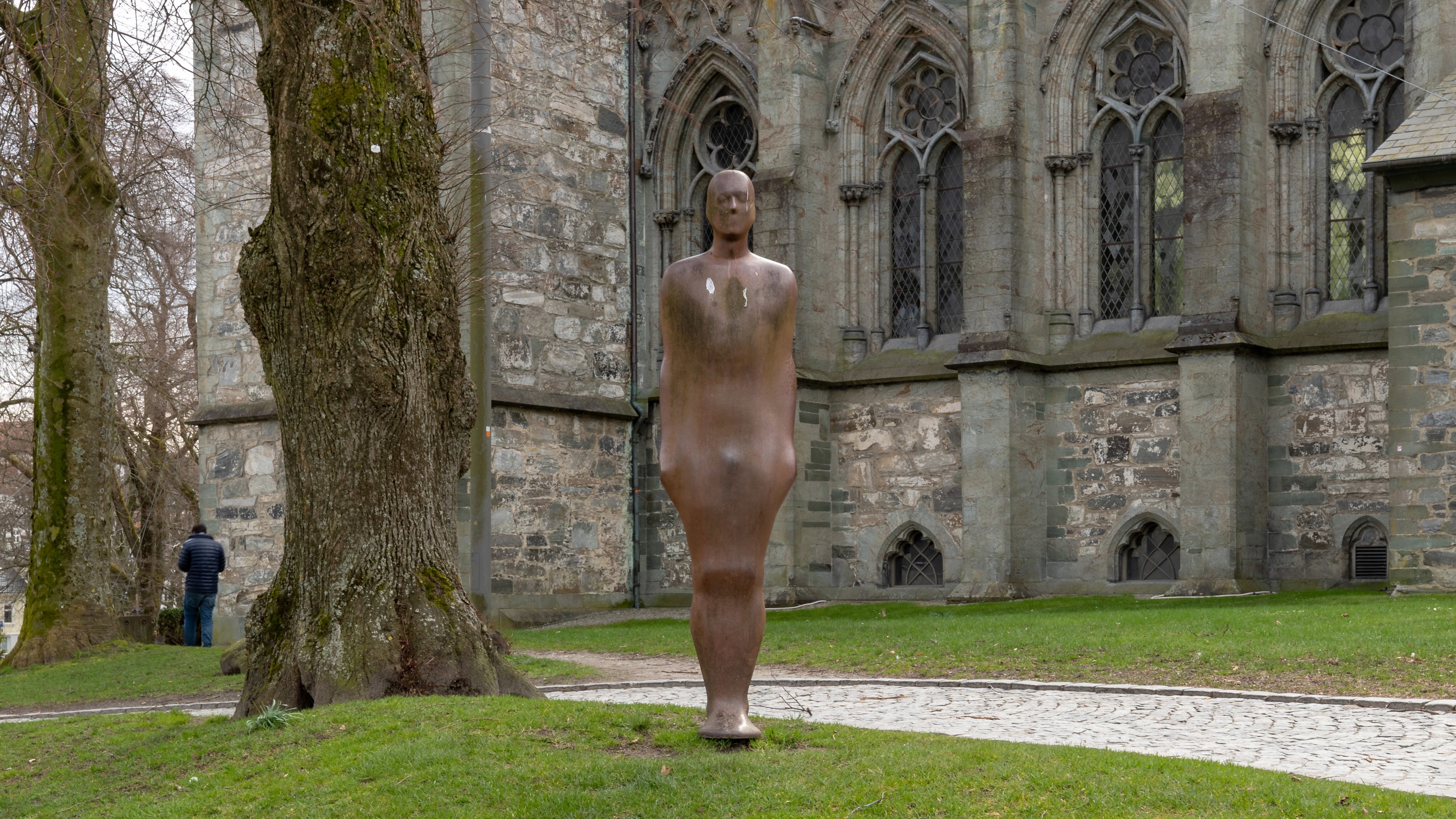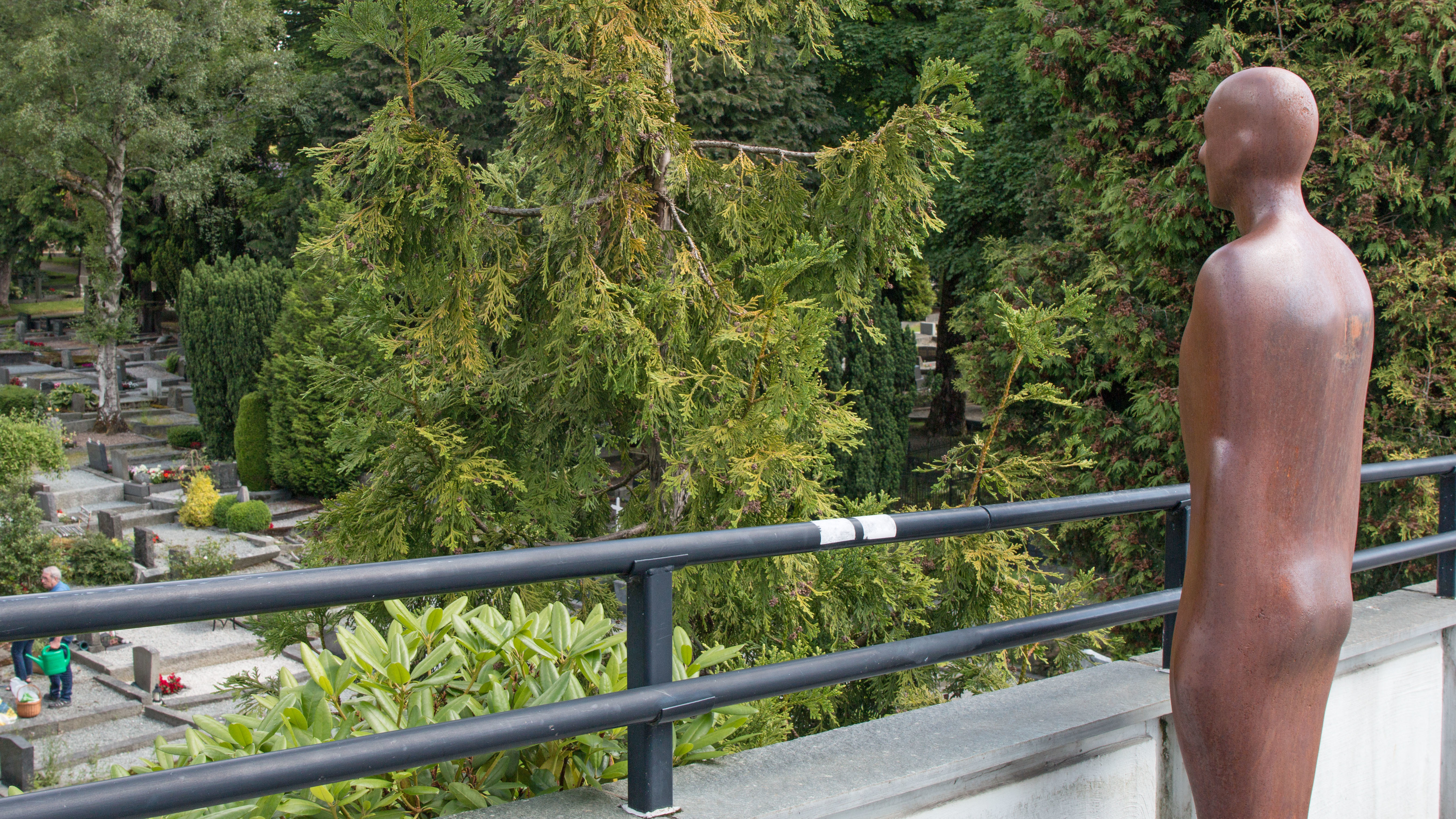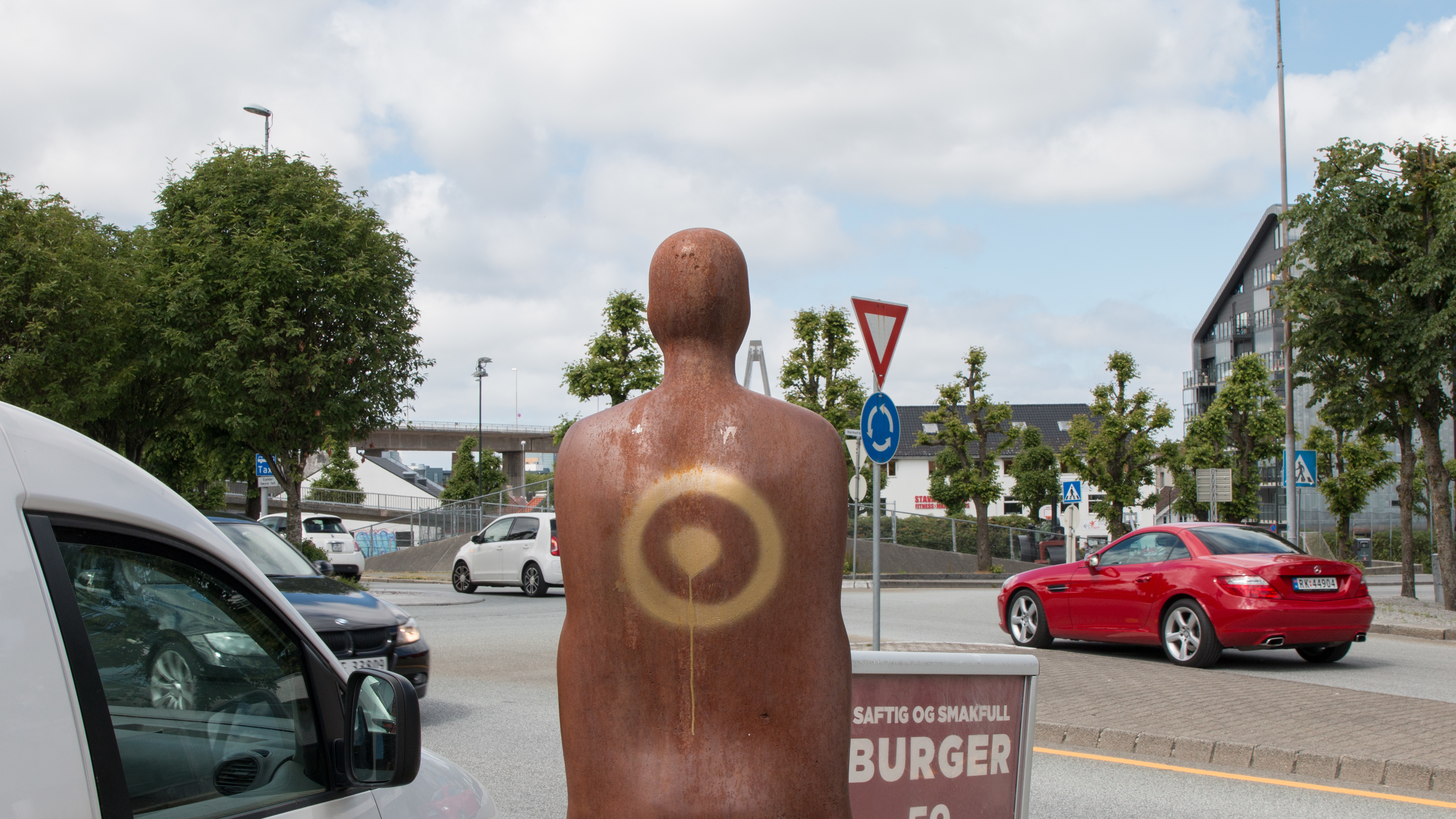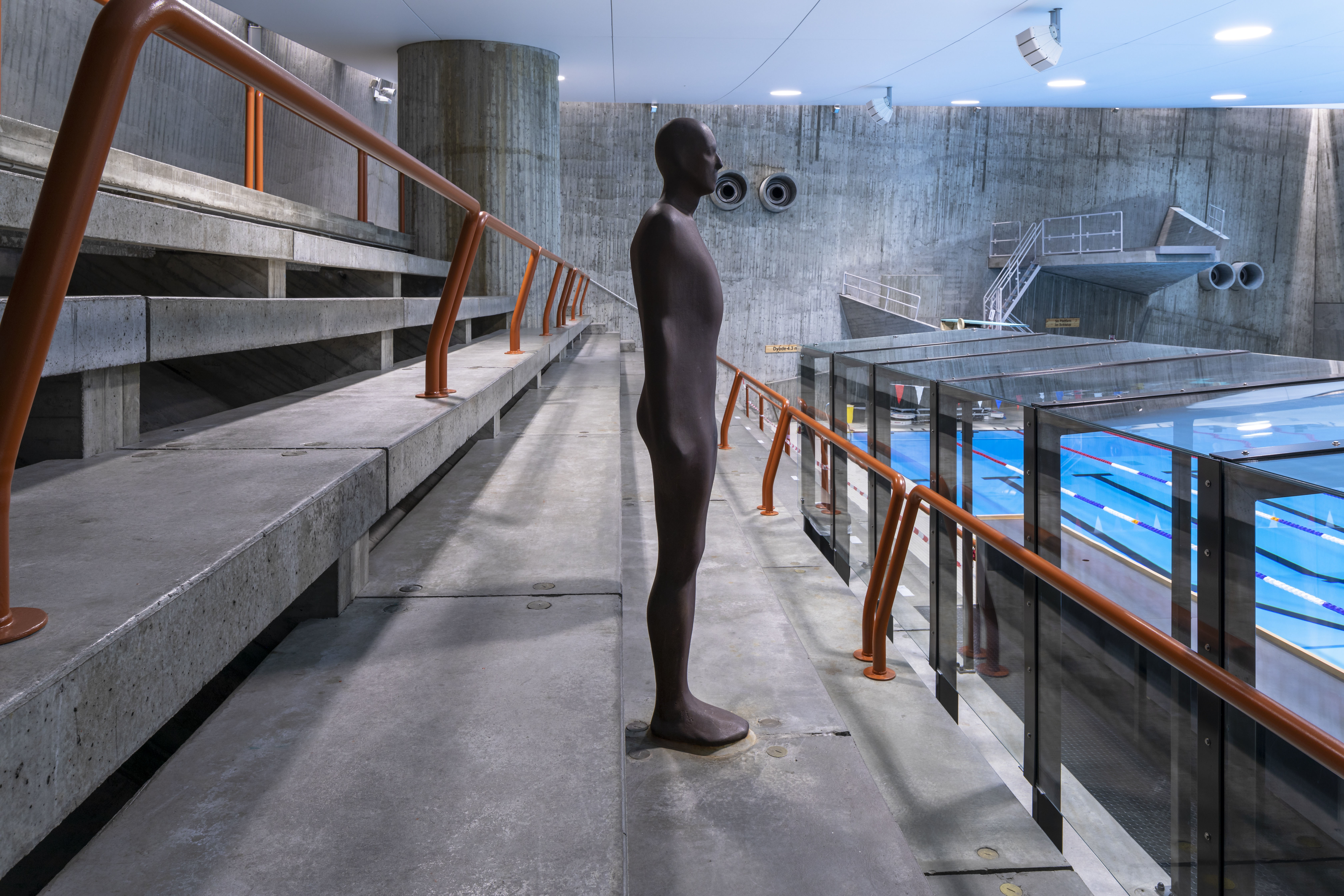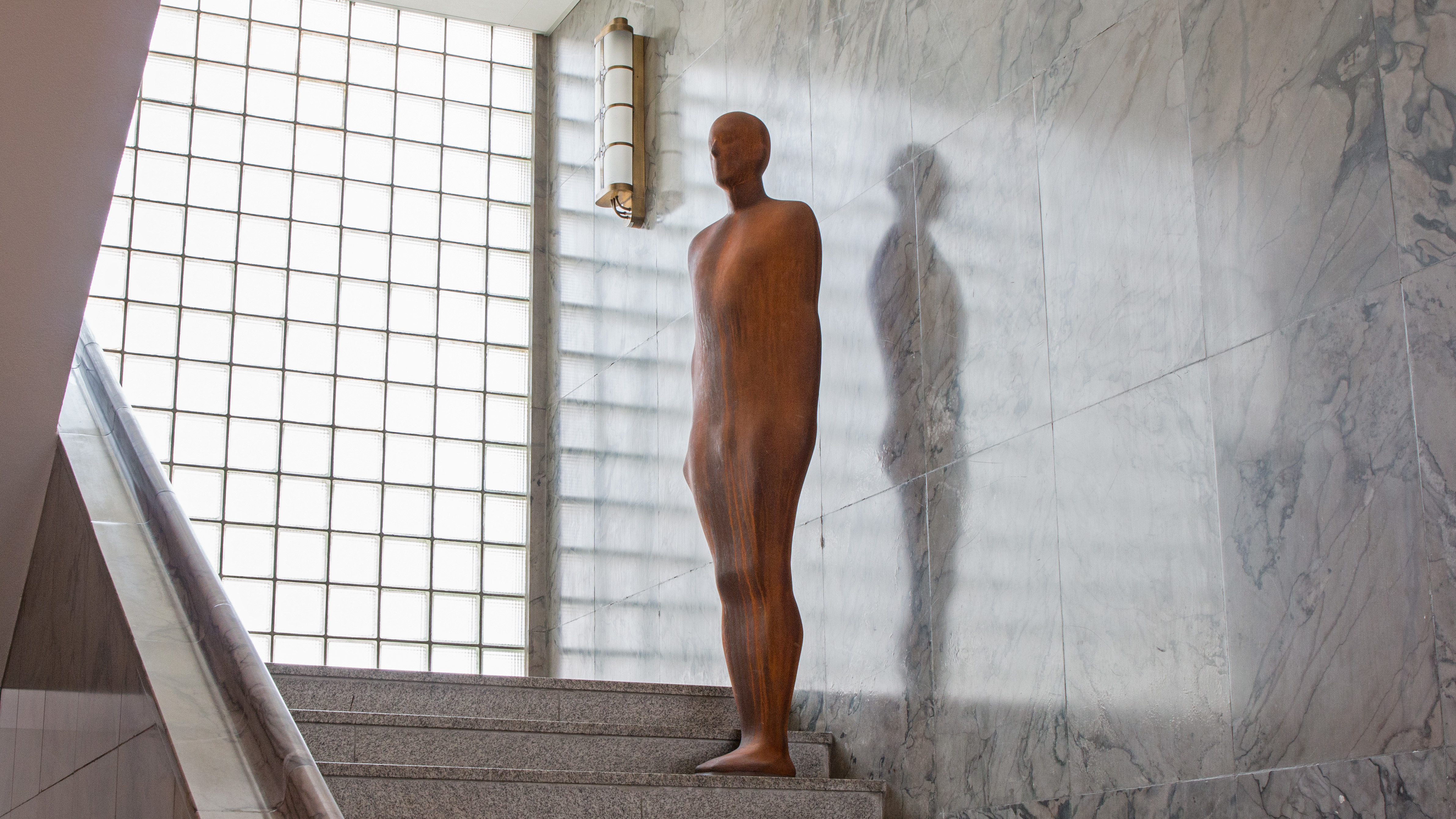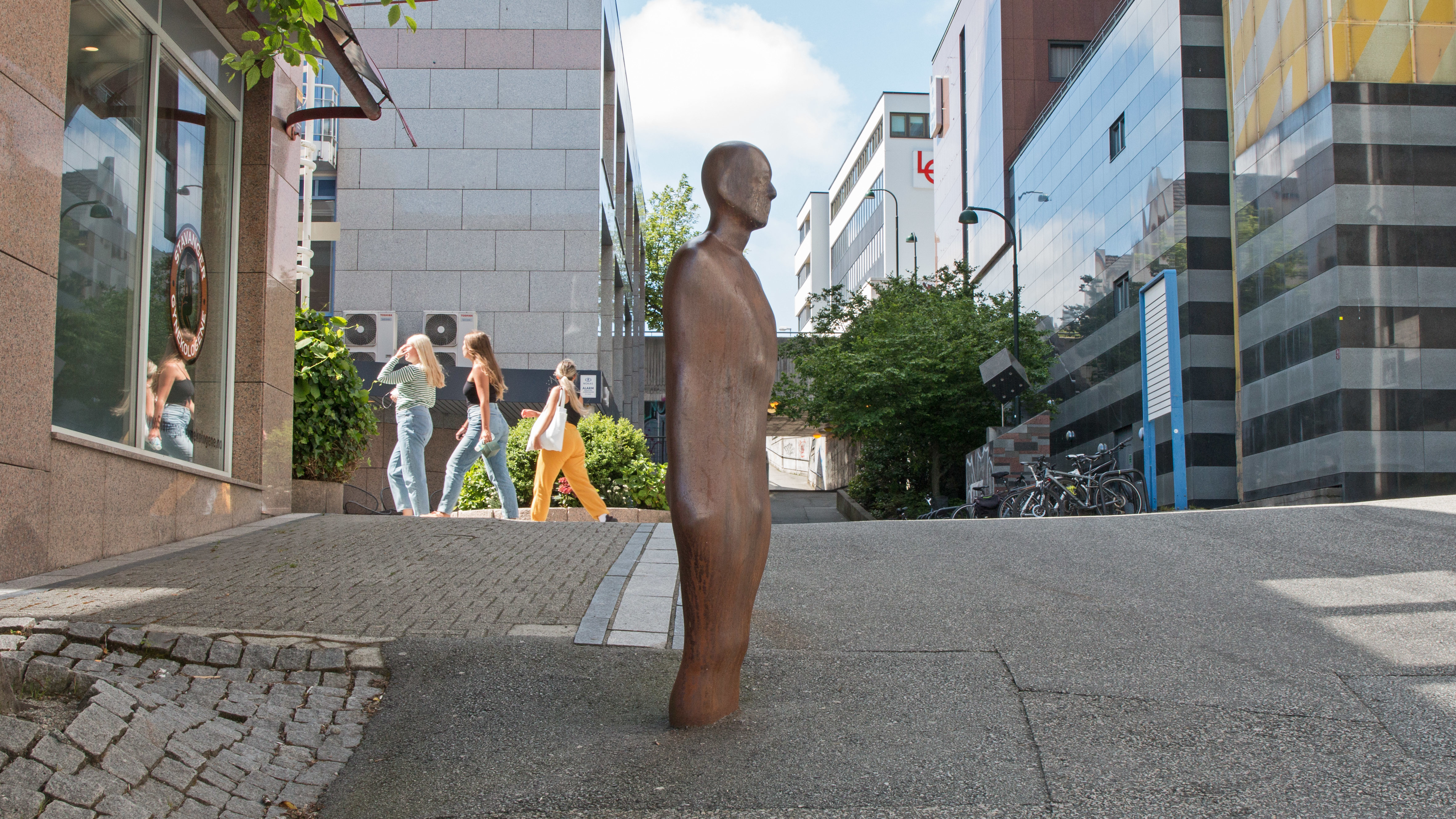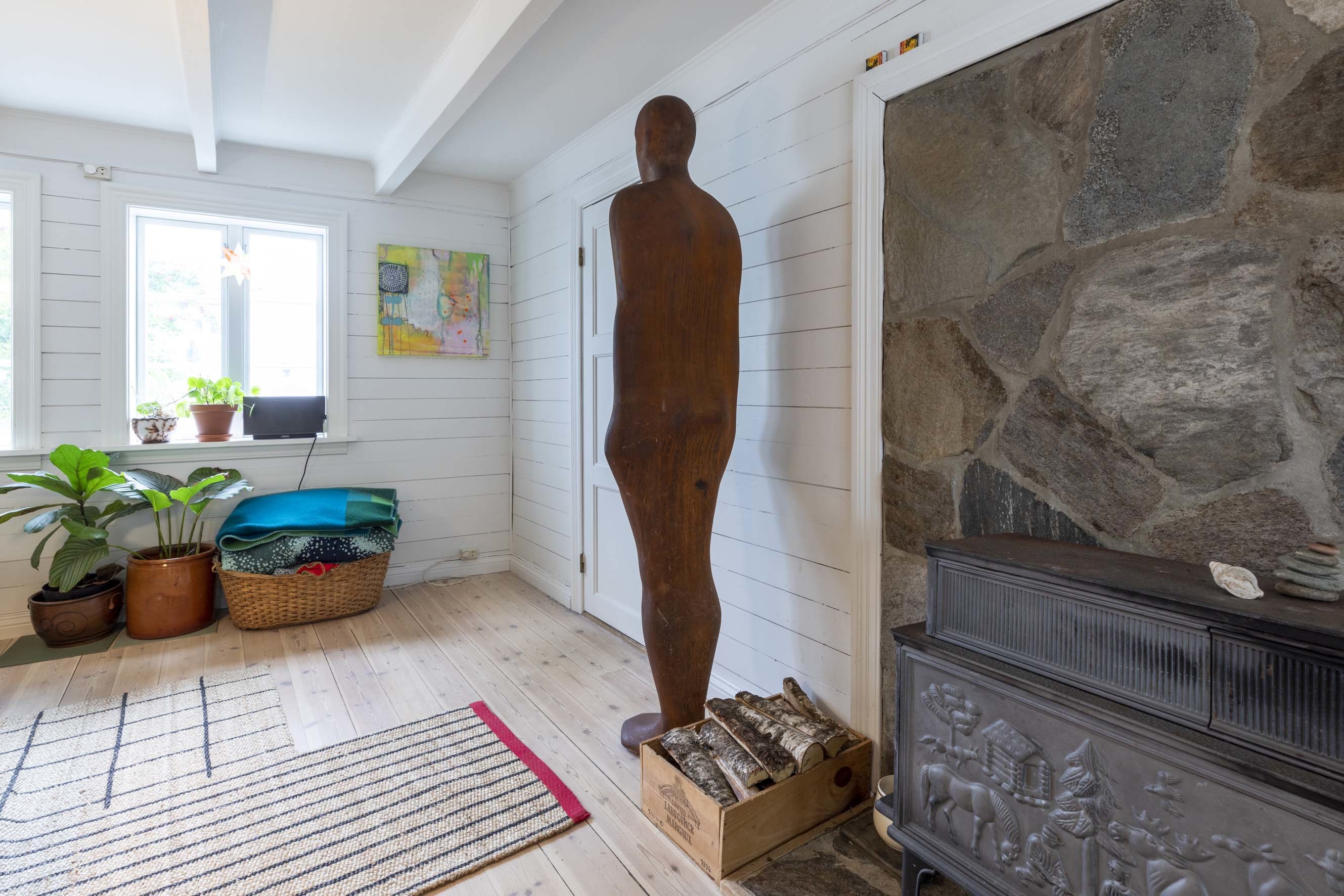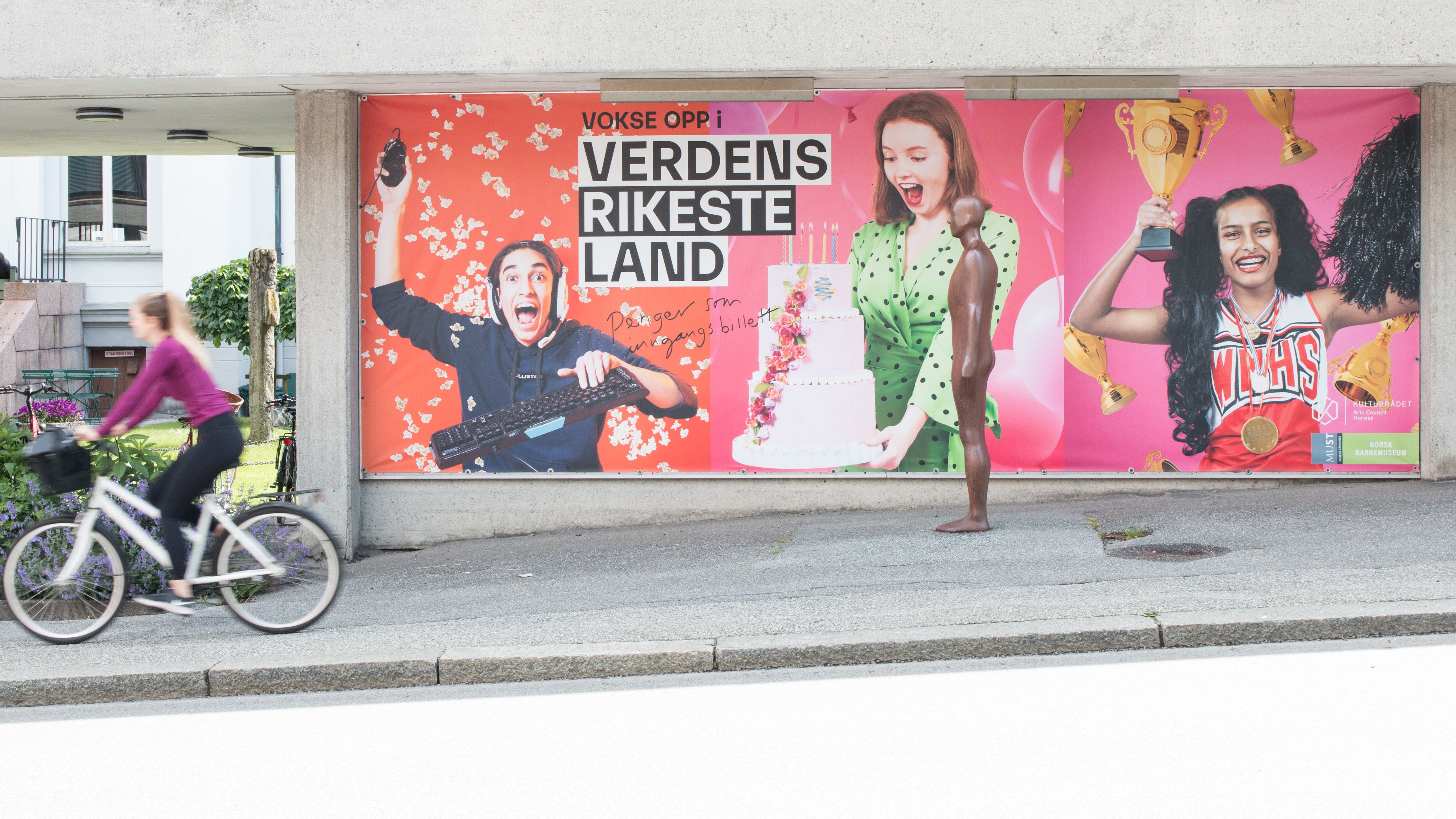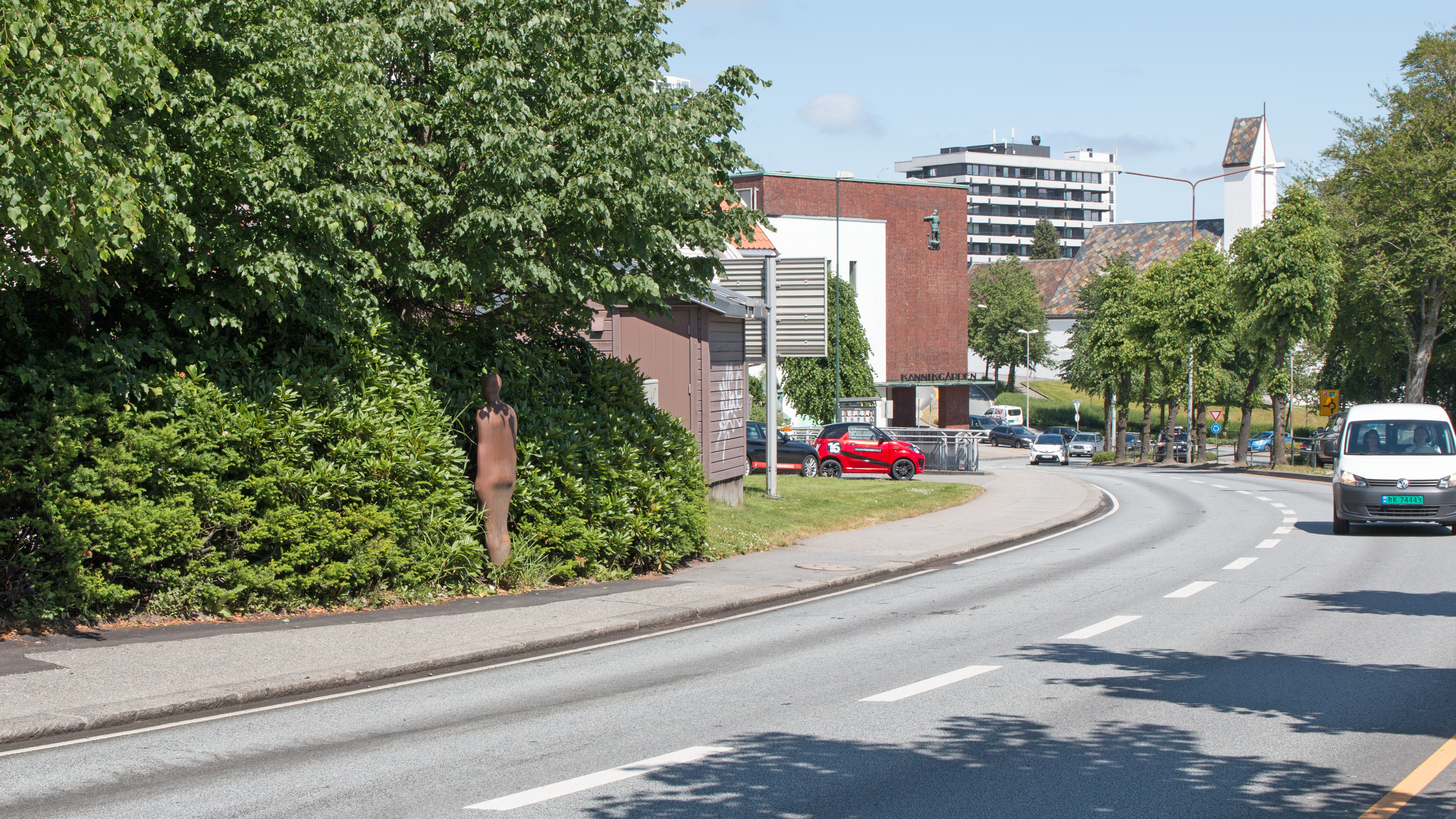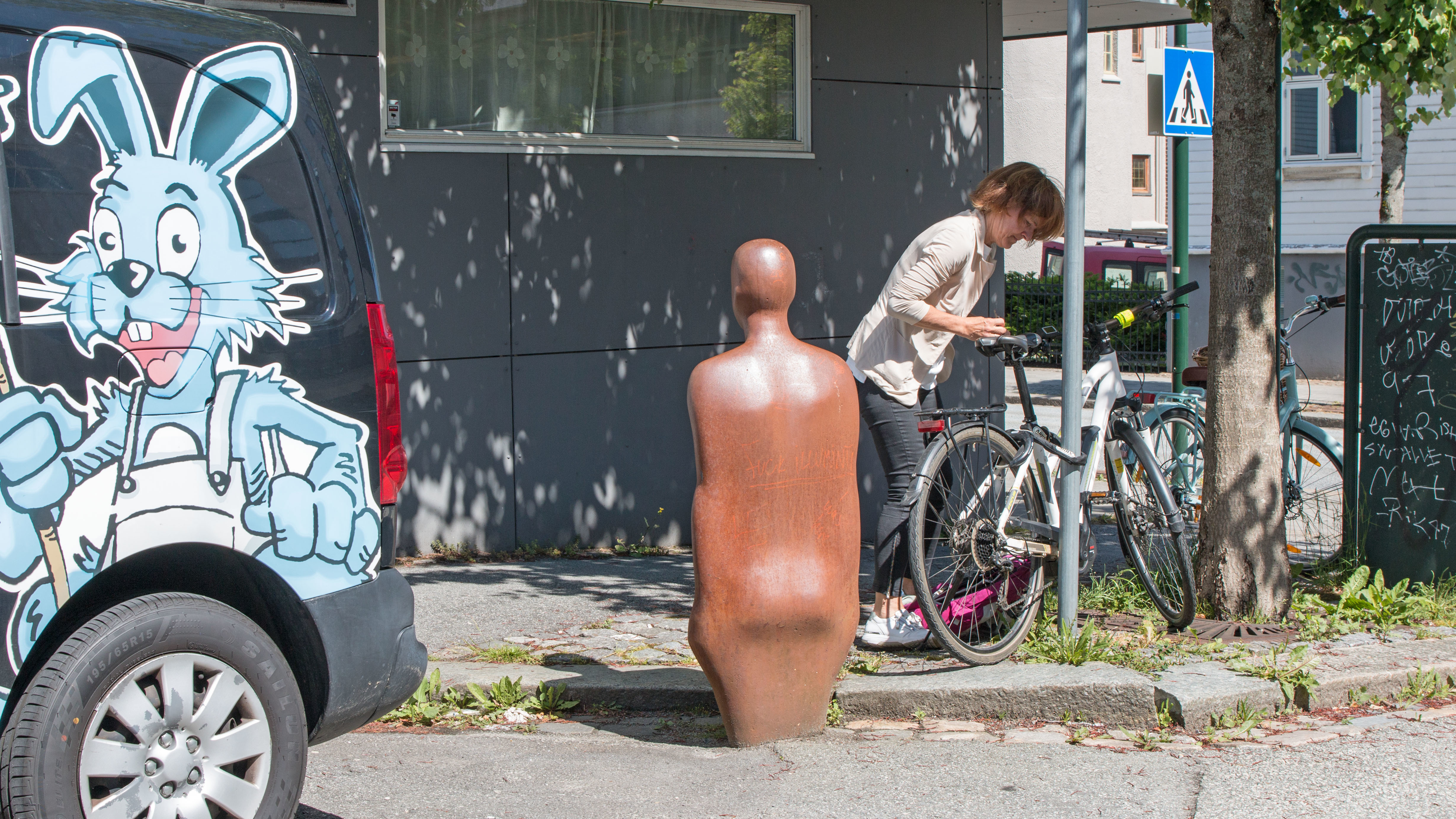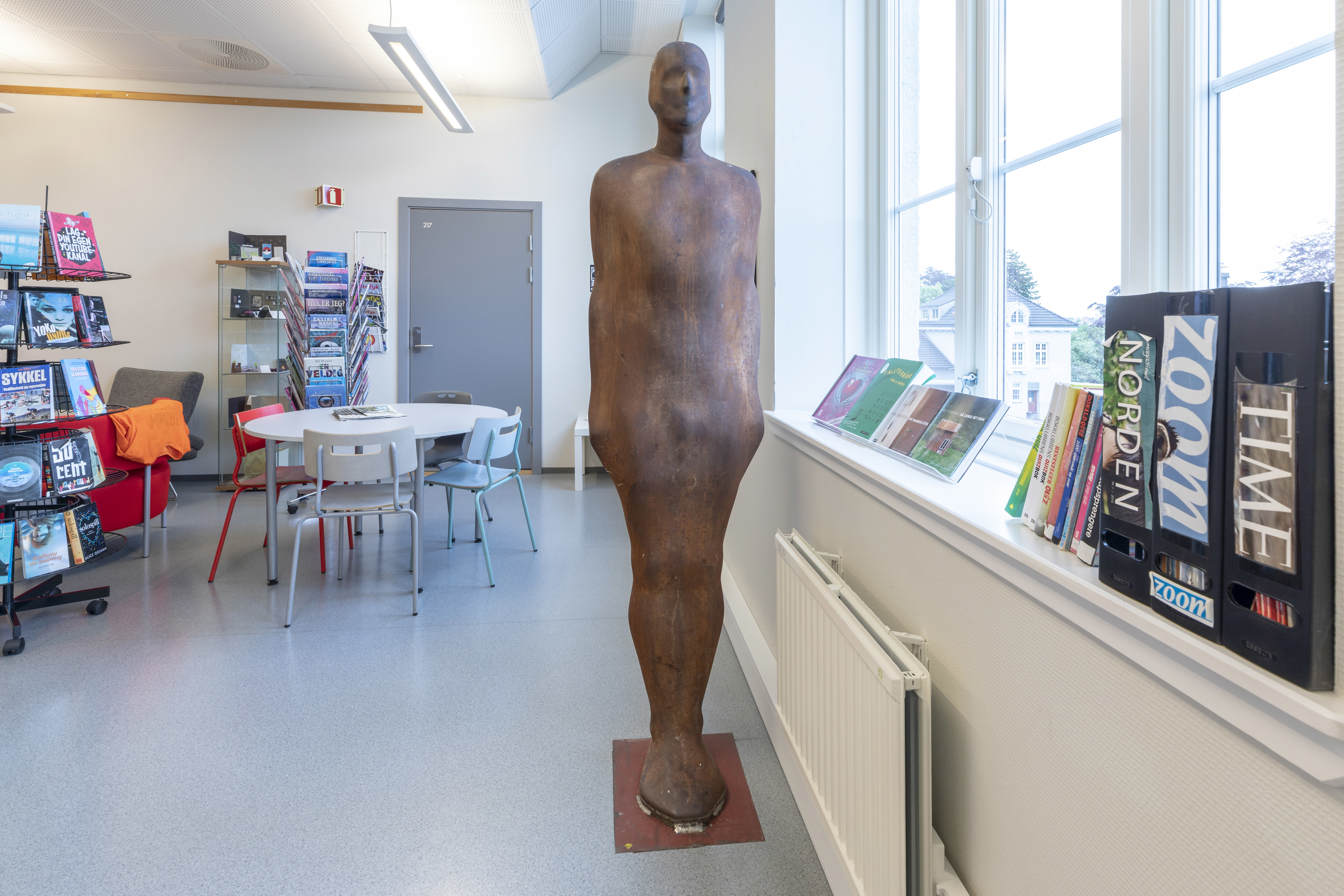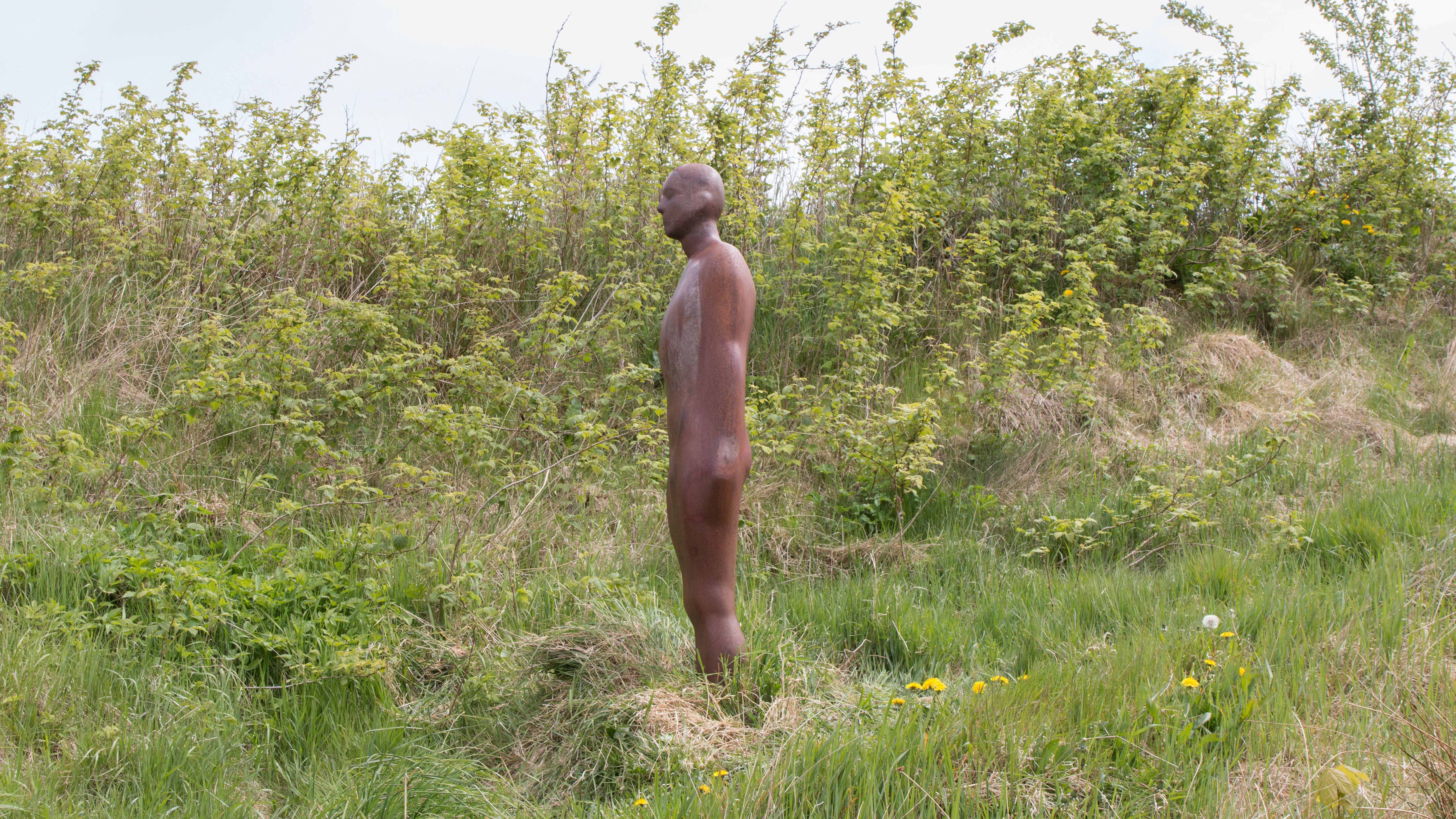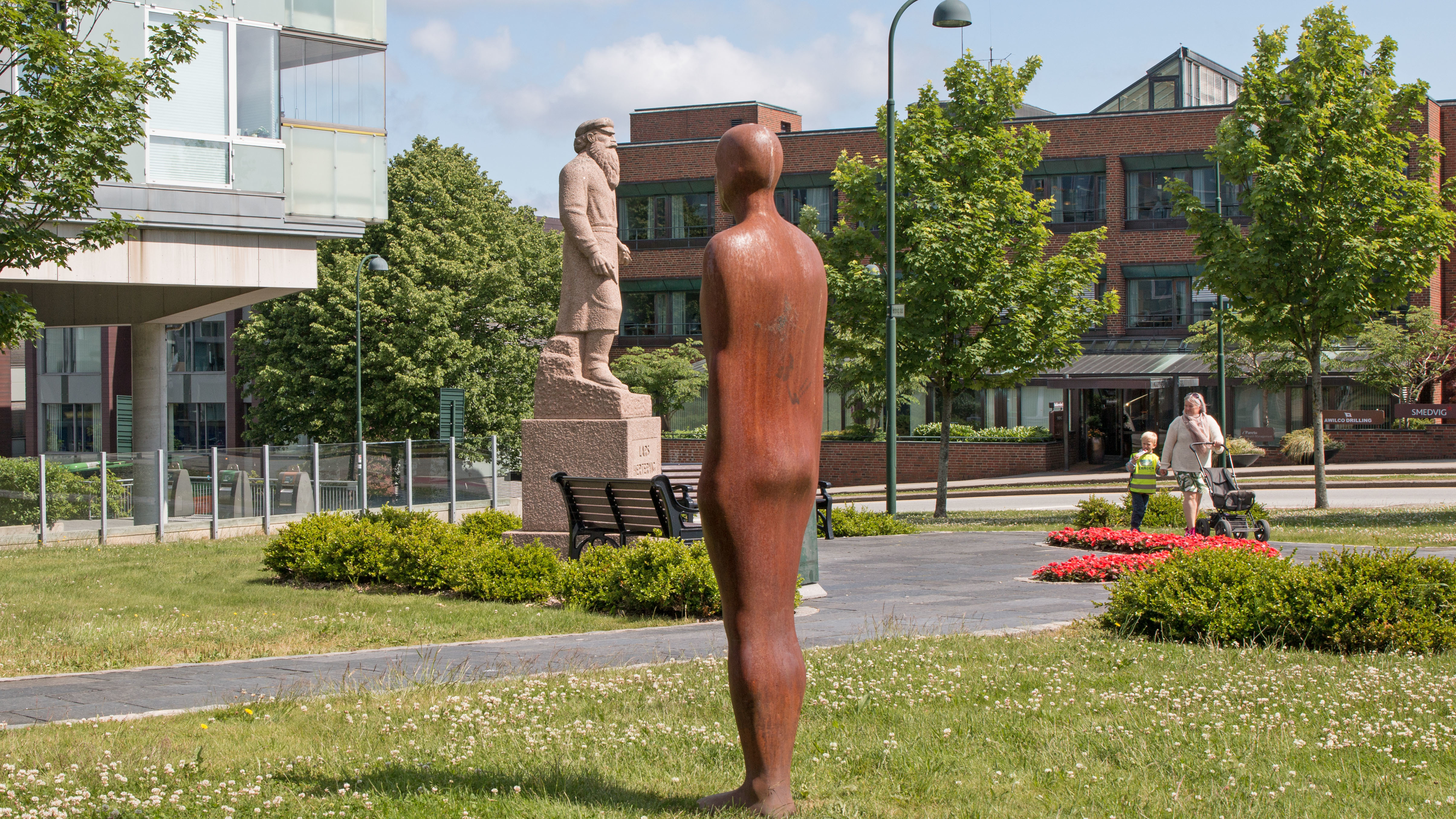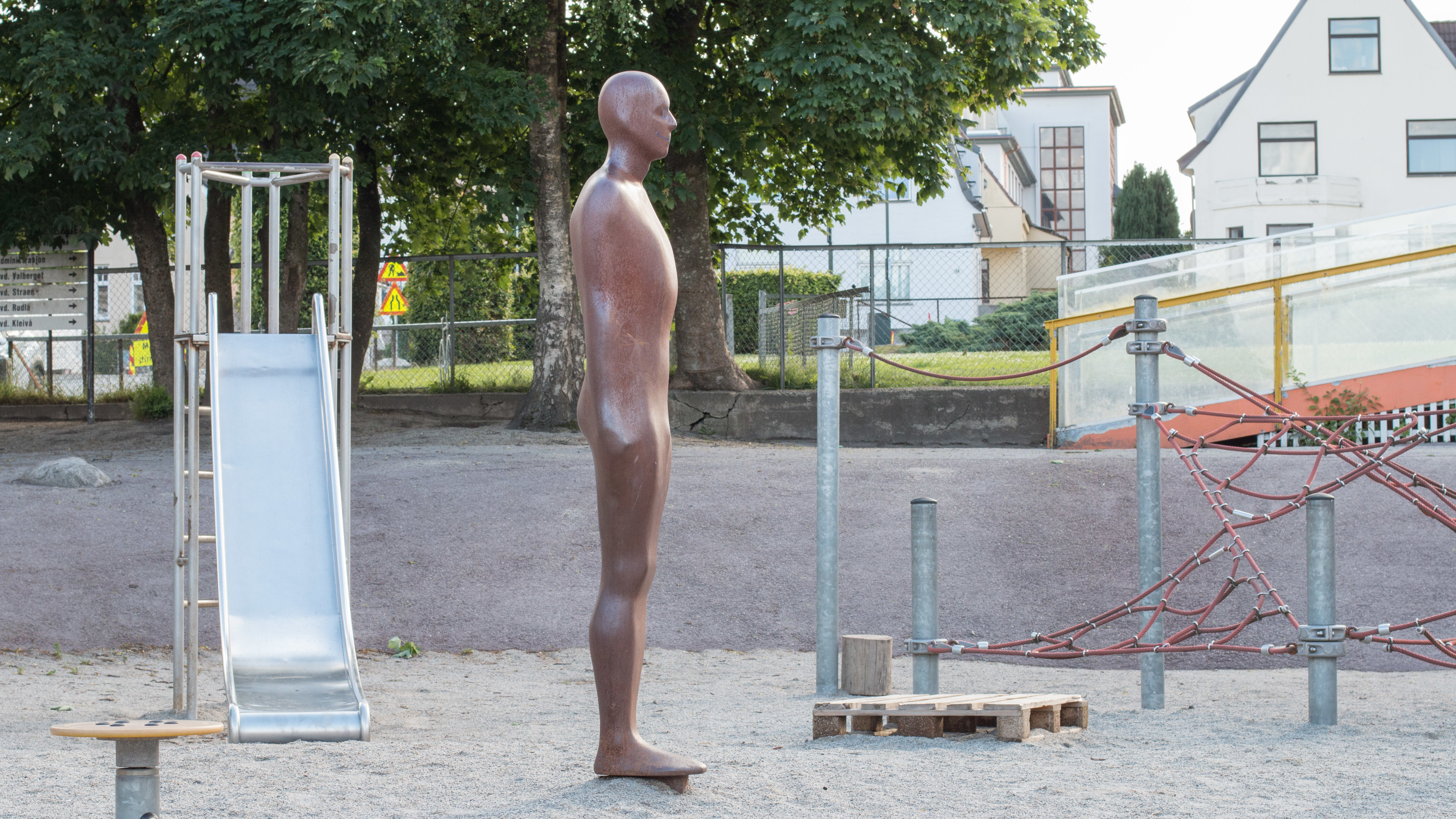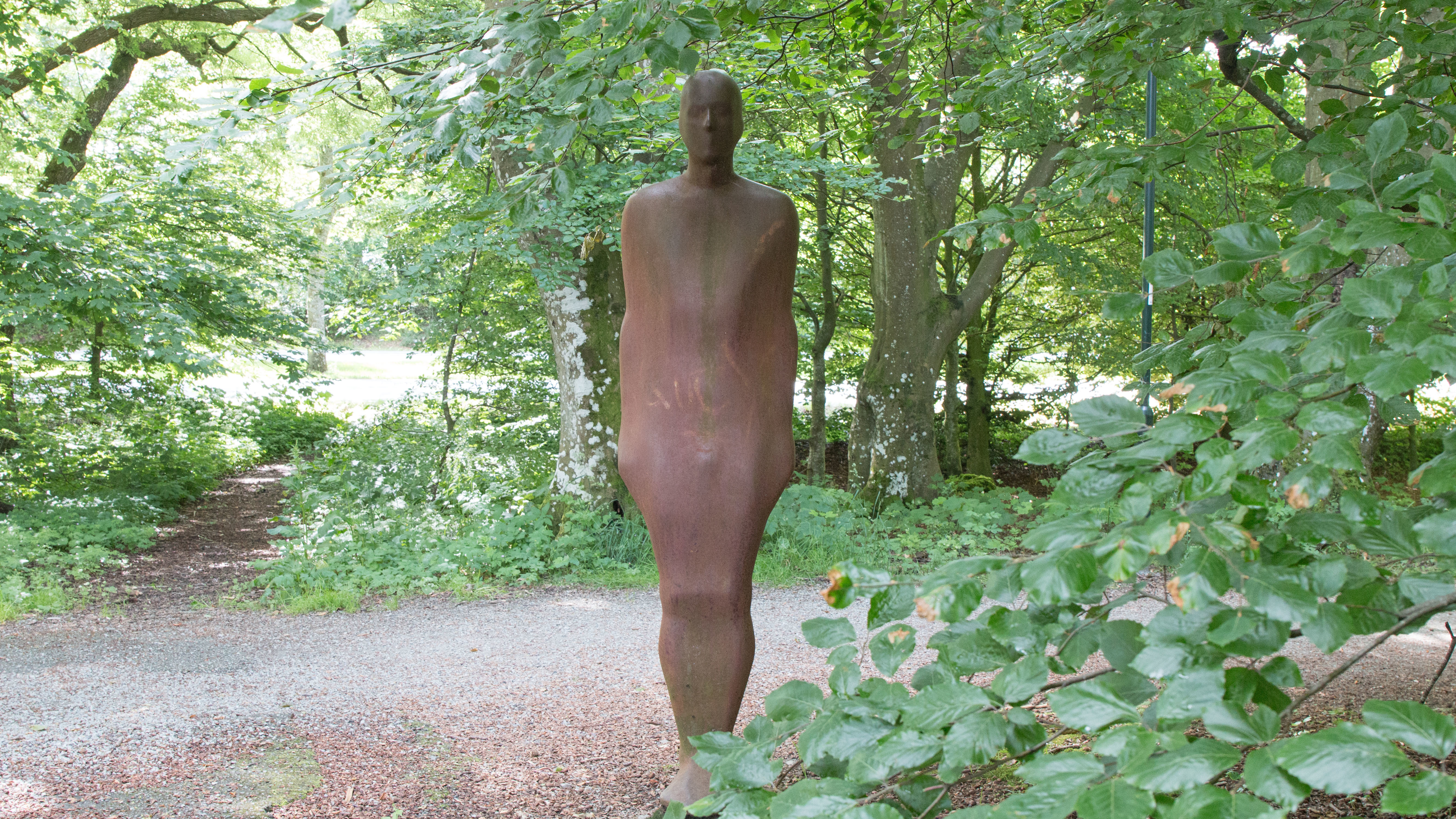BROKEN COLUMN
Explore the rusty steel men digital
In the digital Broken Column Art hike we offer insight to Antony Gormley's site specific sculpture project 'Broken Column' (2003), with consists of 23 identical rusty steel sculptures mounted outdoors and indoors in public, semi-public and private places in Stavanger. The art project encourage us to explore and investigate the surroundings of Stavanger more closely. Every sculpture and place is marked on the map, companioned with photos and text. Have a nice city hike - digital or outdoor!
Follow the link to Broken Column Art hike
'Broken Column' (2003) by Antony Gormley (b. 1950) is Stavanger Art Museum’s largest work of art. It consists of 23 identical rusty steel sculptures mounted outdoors and indoors in public and private places in the city. The 1,95-metre-tall sculptures are based on a cast of the artist’s own body. They relate to each other through their elevation above or below sea level and through the direction in which they face. The sculpture at the fish market looks out from Vågen (Stavanger’s central harbour) and faces 8 degrees west of true north. It is this sculpture that determines the orientation of all the others. The idea is that all the sculptures look out to sea. Think of a topographical map with contour lines spaced at a difference in elevation of 1,95 metres each: all 23 sculptures stand on a different contour line, at a seemingly random point on their respective line. But if all the sculptures were in the exact same place, they would form one continuous column. At the top of this imaginary column is the sculpture inside Stavanger Art Museum. It stands in its own white gallery room, at 41,41 metres above sea level. The next sculpture is in Mosvann Park, on the Eiganes side, and it stands one body height lower, at 39,46 metres above sea level. At altitude-intervals of 1,95 metres, the placement of the statues continues down towards the city centre, to Vågen. The last sculpture stands just beyond the islet Natvigs Minde, at 1,49 metres below sea level. Here’s how the artist describes his idea: "They are displaced vertebrae from an imagined column, the head of one connecting to the foot of the other".
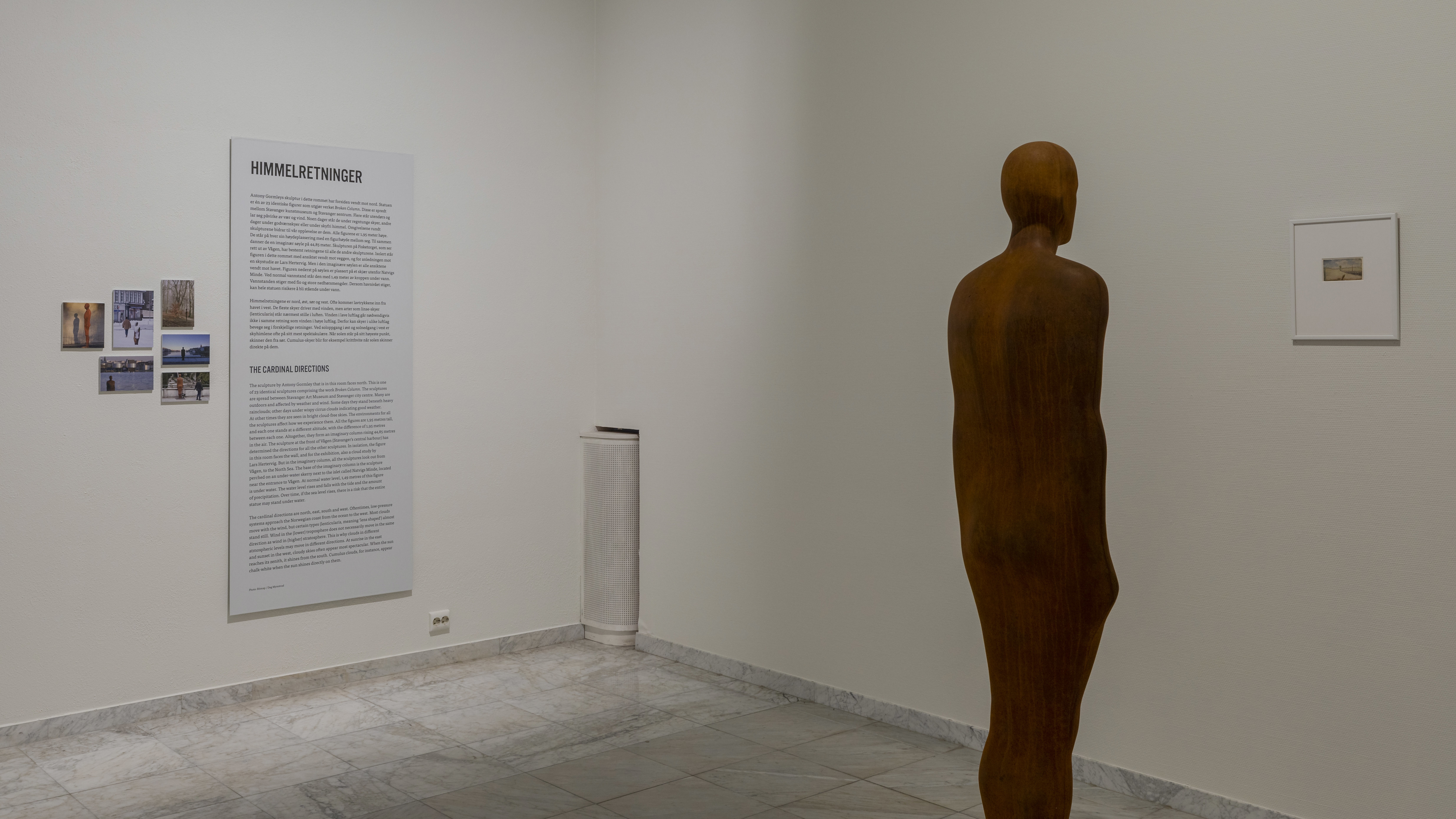
Gormley asks: "How can you make a work that becomes a way of looking again at a city rather than simply occupying it?" His solution is to make numerous casts of his own body shape and to place the ‘clones’ here and there in the city in an interdependent order. Much of the centre of Stavanger is thus mapped on contour lines differentiated by 1,95 metres in altitude. This project is a conceptual work of art that analyses the city of Stavanger with the help of some topographical principles. Never is a sculpture’s placement random. There is a dynamic between the places, but since the sculptures are spread over a large area and stand in public, semi-public and private places, we do not, at first sight, understand the connection between them. We experience them piecemeal, just as we often experience urban spaces.
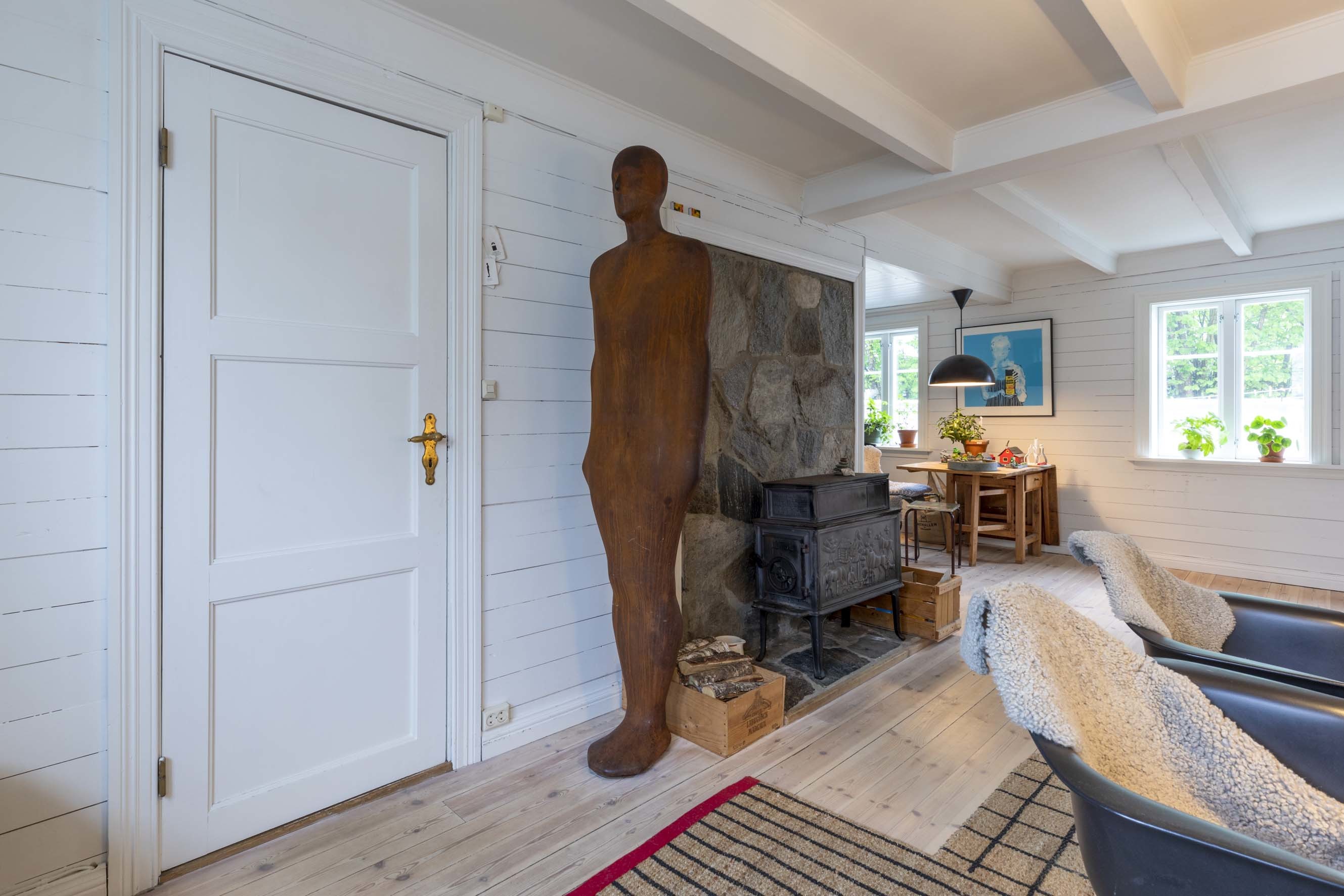
'Broken Column' is unlike traditional statues of famous men. The steel men, like silent witnesses, stand mostly on the same level as the city’s inhabitants. They have a connection to single-standing stones (menhir) from the Bronze Age. But it has been important for the artist that the sculptures have a shape we can empathise with, which reflects their openness to the contexts in which they are placed. The artist once talked about why he used his own body as the starting point for the sculptures: "The most exact way in which I can experience the world is through my own body."
The artist thinks of the sculptures as ‘uninscribed objects’: " … they don’t memorialise anyone in particular. Each one simply identifies a human space in space and shifts attention from the intrinsic qualities of the sculptures to the context that contains them."
'Broken Column' can be seen as an art project that quietly explores its surroundings. Through it, we are encouraged to explore and investigate our own surroundings more closely. What does Stavanger look like? What do we know about the city and its spaces? What does it feel like to be here? How do the urban spaces affect us both physically and mentally? What are the people who live here like?
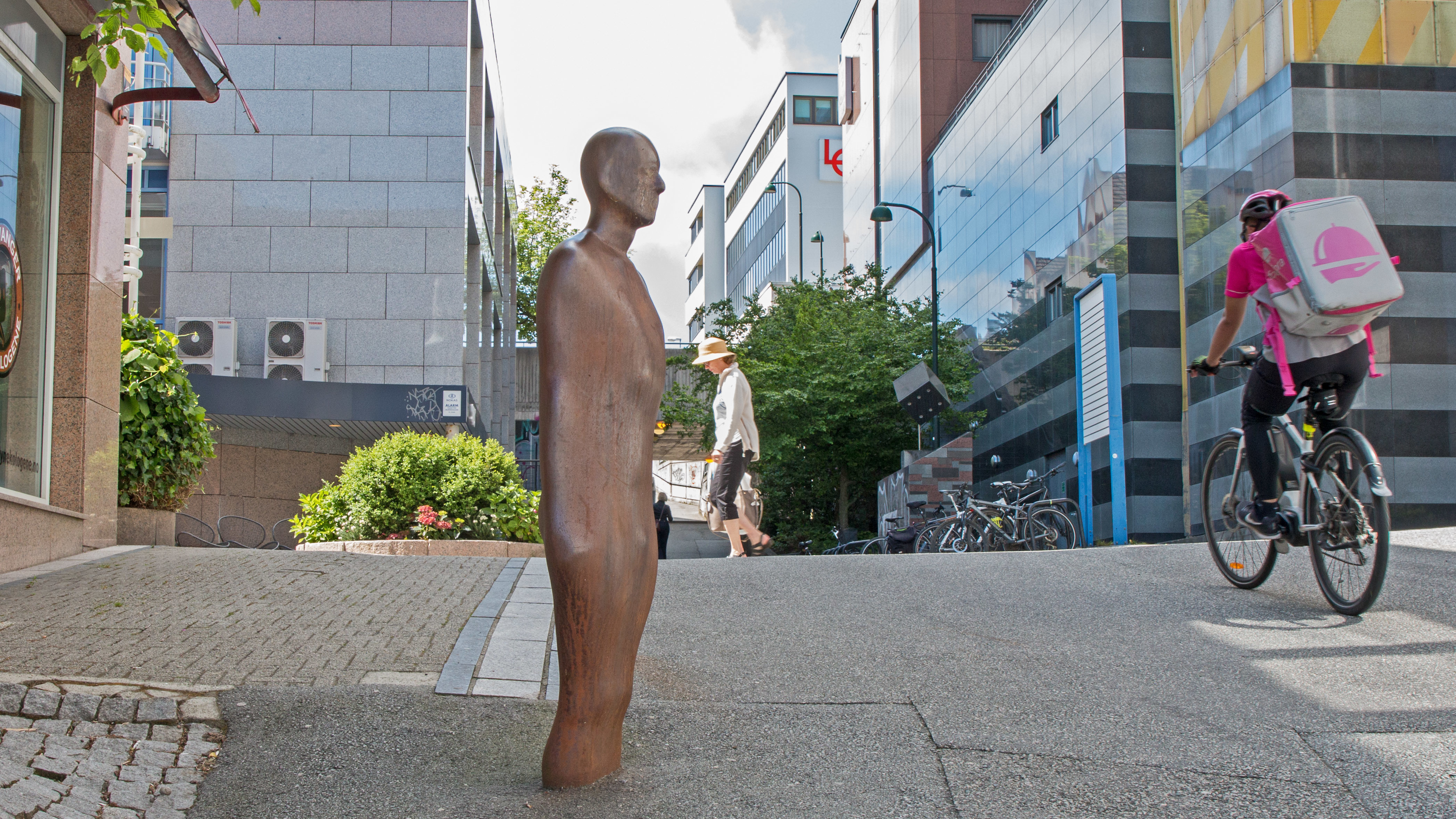
Stavanger Art Museum is the official owner of the sculptural installation, which is a gift from Christian Bjelland, Ådne Kverneland and Stavanger Municipality, but it is to a very great extent owned by the people of Stavanger as a whole.
The project is supported with funds from Stavanger municipality and is a collaboration between Stavanger Art Museum and Smartbyen Stavanger.
Text - May Johannessen
Translation - Arlyn Moi
Photos - Oddbjørn Erland Aarstad and May Johannessen
Quotes - http://www.antonygormley.com/projects/item-view/id/251 Broken Column (2004), Jan Inge Reilstad (red), Wigestrand forlag, Stavanger
'Mapster' - Rune Løvik, Origin AS
